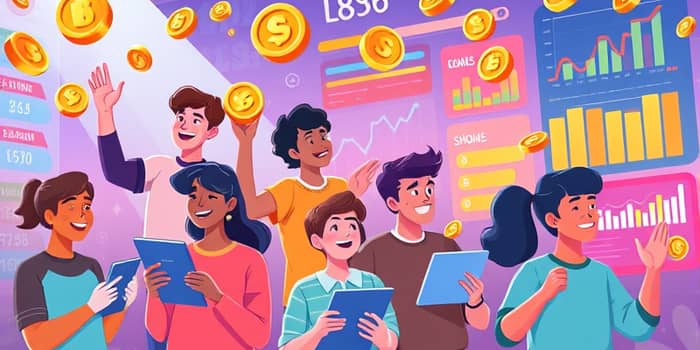
In today’s digital era, traditional financial education often struggles to capture the attention of younger audiences. Yet, as global financial complexity increases, the need to equip youth with practical money management skills is more urgent than ever. Gamification offers a powerful answer, transforming dry concepts into immersive and engaging learning experiences that resonate with the next generation of digital natives.
At its core, financial literacy gamification applies game design elements and principles to educational content. By integrating points, badges, leaderboards, and narrative-driven challenges, these platforms shift learners from passive recipients to active participants. They foster deeper understanding through hands-on simulation rather than rote memorization.
Key principles include:
Gamification is no niche experiment. The global gamification market reached $15.43 billion in 2025 and is projected to soar to $48.72 billion by 2029, with analysts forecasting as much as $132.6 billion by 2032. Within education alone, gamified solutions are expected to hit $27.5 billion by 2025, reflecting a compound annual growth rate of 27.4% between 2020 and 2025.
Adoption among the Global 2000 has surpassed 70%, as financial institutions and fintech startups recognize the competitive edge provided by data-driven personalized financial recommendations and enriched user engagement.
Successful gamified platforms employ a suite of mechanics designed to sustain motivation and reinforce learning:
Empirical data demonstrates that gamification can significantly boost both engagement and outcomes. Platforms with gamified features see a 191.67% rise in daily active users, an 180% increase in goal setting, and an 85.71% jump in goal completion rates. Users of gamified savings apps save 20% more on average, with 75% meeting their savings targets compared to just 45% under traditional methods.
Educational outcomes follow a similar pattern: quiz completion rates climb to 85%, and 75% of learners return regularly for fresh microlearning modules. By turning abstract financial concepts into concrete tasks, these systems encourage sustainable long-term behavior change and build confidence in decision-making.
Leading institutions have embraced gamified education with remarkable results. Extraco Bank saw a 700% surge in customer acquisitions after introducing gamified modules, lifting conversion rates from 2% to 14%. Revolut’s interactive budgeting challenges helped young users allocate funds more effectively, while CRED rewarded timely bill payments with exclusive perks, driving platform stickiness and referral growth.
MoneyLion’s investment simulators and Achieve’s savings quests illustrate how diverse approaches can all leverage positive reinforcement through gamified feedback to cultivate lasting financial habits.
Several cognitive and motivational theories explain why gamification works so well in financial contexts. First, active learning—where learners engage directly with problems—leads to deeper processing than passive lectures. Scenario-based challenges, for example, mirror real-life budgeting, forcing users to weigh trade-offs and anticipate consequences.
Second, positive reinforcement through points, badges, and social recognition triggers dopamine responses, enhancing user retention and fostering collaborative peer-to-peer competitive challenges. Finally, by breaking down complex topics into bite-sized modules, gamified systems reduce cognitive overload and lower psychological barriers to entry.
Despite the promise, gamification is not a panacea. Approximately 10% of users may still disengage due to technical limitations or lack of interest. Poorly designed elements can feel superficial, failing to drive meaningful change. Furthermore, demographic and socioeconomic barriers—such as limited mobile access—can prevent equitable adoption.
Looking ahead, integrating AI and machine learning to tailor challenges dynamically promises to enhance personalization. As virtual and augmented reality platforms mature, immersive financial simulations could offer even richer educational landscapes.
Organizations seeking to harness gamification should consider the following best practices:
By adhering to these guidelines, educators and fintech innovators can create sustainable engagement loops that empower the next generation with robust money-management skills.
As the gap in financial literacy persists worldwide, gamification emerges as a dynamic, evidence-based approach to educate, motivate, and inspire. By marrying the motivational power of games with solid pedagogical design, we can cultivate a generation of financially confident individuals prepared to navigate an increasingly complex economic landscape.
References













